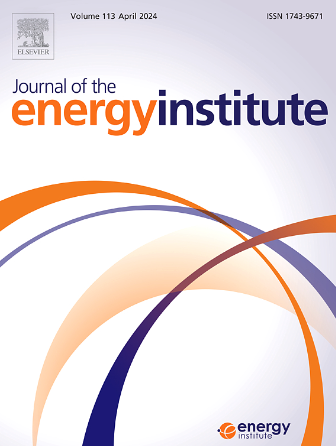CO2 hydrogenation to methanol over In2O3: Influence of catalyst synthesis methods
IF 5.6
2区 工程技术
Q2 ENERGY & FUELS
引用次数: 0
Abstract
The development of highly active and thermally stable catalysts for green methanol synthesis from CO2 hydrogenation is critical for advancing sustainable renewable energy cycles. In this study, indium oxide (In2O3) catalysts were synthesized by co-precipitation, sol gel, and direct calcination methods, and their structure-activity relationships in CO2 hydrogenation were systematically investigated. The co-precipitation-derived In2O3 catalyst achieved the highest CO2 conversion (13.8 %) and methanol space–time yield (STY, 408 gmethanol h−1 kgcat−1). In contrast, the sol-gel-derived In2O3 catalyst demonstrated excellent stability, retaining 90.7 % of its initial activity after 60 h of operation. The superior performance of co-precipitation-prepared In2O3 was attributed to its smaller particle size, larger surface area, higher oxygen vacancy concentration, enhanced H2 dissociation ability, and superior CO2 adsorption capacity. Meanwhile, the outstanding stability of the sol-gel-derived In2O3 was linked to its intrinsic hydrophobicity, which effectively suppressed sintering and minimized particle agglomeration during reactions. This study provides valuable insights into the rational design of efficient and durable In2O3-based catalysts for CO2 hydrogenation, advancing the development of green methanol production processes.
In2O3上CO2加氢制甲醇:催化剂合成方法的影响
开发高活性、热稳定的CO2加氢绿色甲醇催化剂对于推进可持续的可再生能源循环至关重要。本文采用共沉淀法、溶胶-凝胶法和直接煅烧法合成了氧化铟(In2O3)催化剂,并对其在CO2加氢过程中的构效关系进行了系统研究。共沉淀衍生的In2O3催化剂具有最高的CO2转化率(13.8%)和甲醇空时产率(STY, 408 gmethanol h−1 kgcat−1)。相比之下,溶胶-凝胶衍生的In2O3催化剂表现出优异的稳定性,在运行60 h后保持了90.7%的初始活性。共沉淀法制备的In2O3具有更小的粒径、更大的表面积、更高的氧空位浓度、更强的H2解离能力和更强的CO2吸附能力。同时,溶胶-凝胶衍生的In2O3优异的稳定性与其固有的疏水性有关,这有效地抑制了反应过程中的烧结和最小化了颗粒团聚。该研究为合理设计高效耐用的in2o3基CO2加氢催化剂,推进绿色甲醇生产工艺的发展提供了有价值的见解。
本文章由计算机程序翻译,如有差异,请以英文原文为准。
求助全文
约1分钟内获得全文
求助全文
来源期刊

Journal of The Energy Institute
工程技术-能源与燃料
CiteScore
10.60
自引率
5.30%
发文量
166
审稿时长
16 days
期刊介绍:
The Journal of the Energy Institute provides peer reviewed coverage of original high quality research on energy, engineering and technology.The coverage is broad and the main areas of interest include:
Combustion engineering and associated technologies; process heating; power generation; engines and propulsion; emissions and environmental pollution control; clean coal technologies; carbon abatement technologies
Emissions and environmental pollution control; safety and hazards;
Clean coal technologies; carbon abatement technologies, including carbon capture and storage, CCS;
Petroleum engineering and fuel quality, including storage and transport
Alternative energy sources; biomass utilisation and biomass conversion technologies; energy from waste, incineration and recycling
Energy conversion, energy recovery and energy efficiency; space heating, fuel cells, heat pumps and cooling systems
Energy storage
The journal''s coverage reflects changes in energy technology that result from the transition to more efficient energy production and end use together with reduced carbon emission.
 求助内容:
求助内容: 应助结果提醒方式:
应助结果提醒方式:


